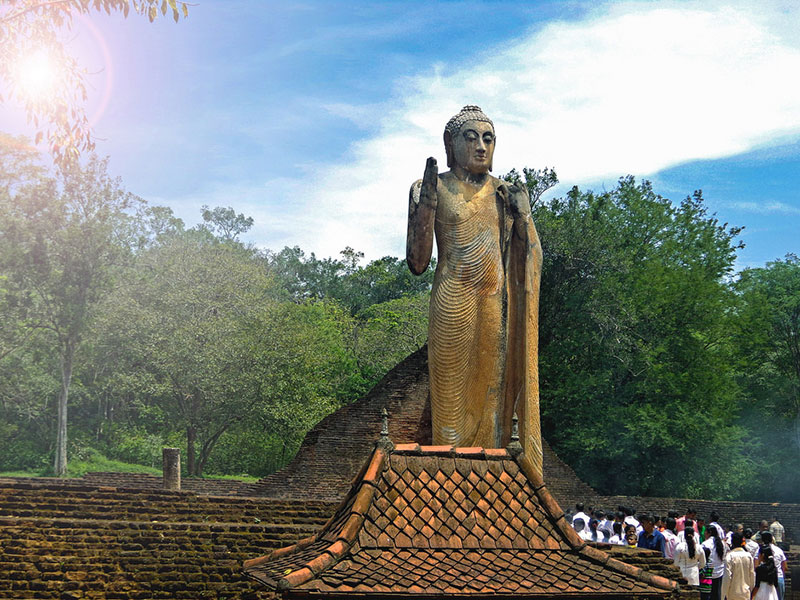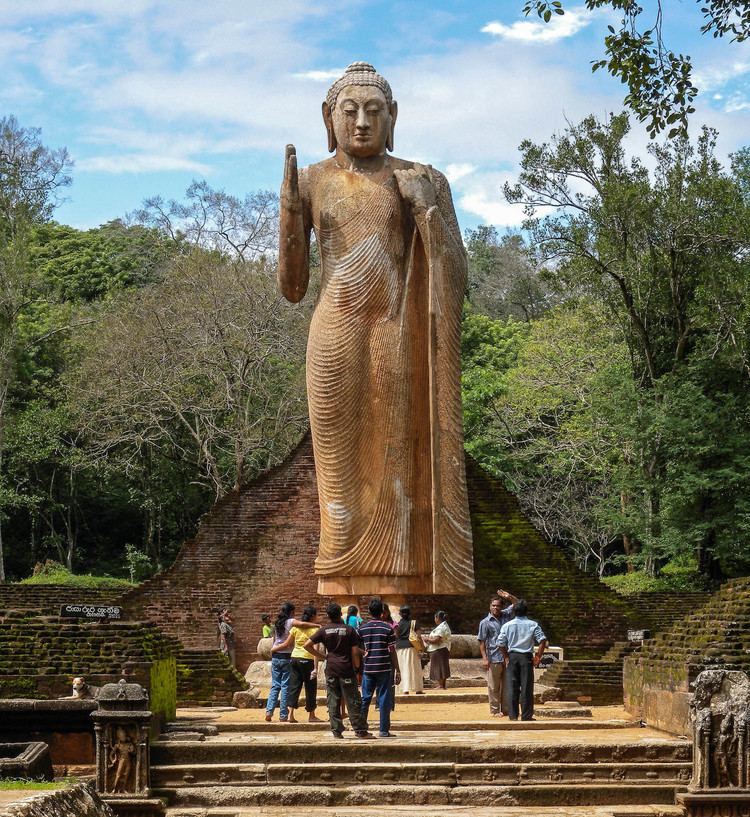The Maligawila Buddha Statue is situated near the Maligawila Temple in the Monaragala District of Sri Lanka. The temple complex serves as a pilgrimage site and a center of Buddhist worship and meditation.
The Maligawila Buddha Statue dates back to the 7th century CE, during the reign of King Aggabodhi I of the ancient kingdom of Ruhuna. It was created during the early Anuradhapura period, which saw a flourishing of Buddhist art and architecture in Sri Lanka. The original Maligawila Buddha Statue was destroyed by invaders in ancient times. However, in the 1950s, archaeologists discovered fragments of the statue buried in the vicinity of the Maligawila Temple. These fragments were painstakingly reconstructed to restore the statue to its former glory.
The statue is renowned for its size and grandeur, standing at approximately 14 meters (46 feet) in height. It is carved out of a single massive limestone rock, making it one of the largest free-standing Buddha statues in Sri Lanka. The statue depicts the Buddha in a standing posture, with the right hand raised in the Abhaya Mudra, or the gesture of fearlessness and protection. The left hand is depicted in the varada mudra, symbolizing generosity and compassion.
The Maligawila Buddha Statue exhibits fine details in its facial features, robes, and accessories, reflecting the artistic sophistication of the period. The serene expression on the Buddha's face conveys a sense of inner peace and enlightenment.
The statue is a remarkable example of Sinhalese Buddhist sculpture from the period, showcasing the artistic skill and craftsmanship of ancient Sri Lankan artisans. It belongs to the standing Buddha statue tradition prevalent during the Anuradhapura era.
The Maligawila Buddha Statue holds profound cultural and religious significance for Buddhists in Sri Lanka. It serves as a symbol of the country's Buddhist heritage and a reminder of the enduring legacy of Buddhism on the island.

